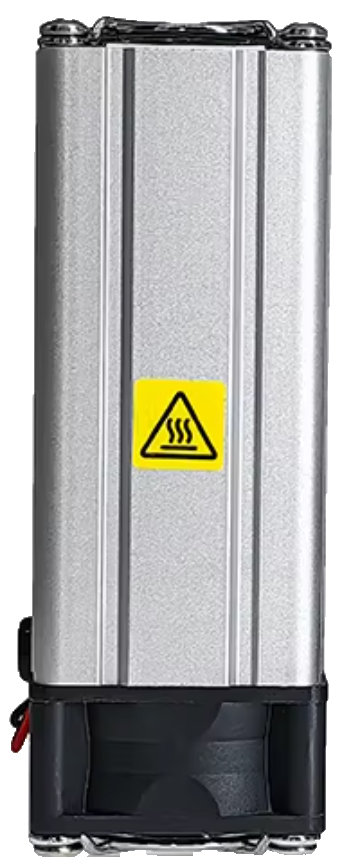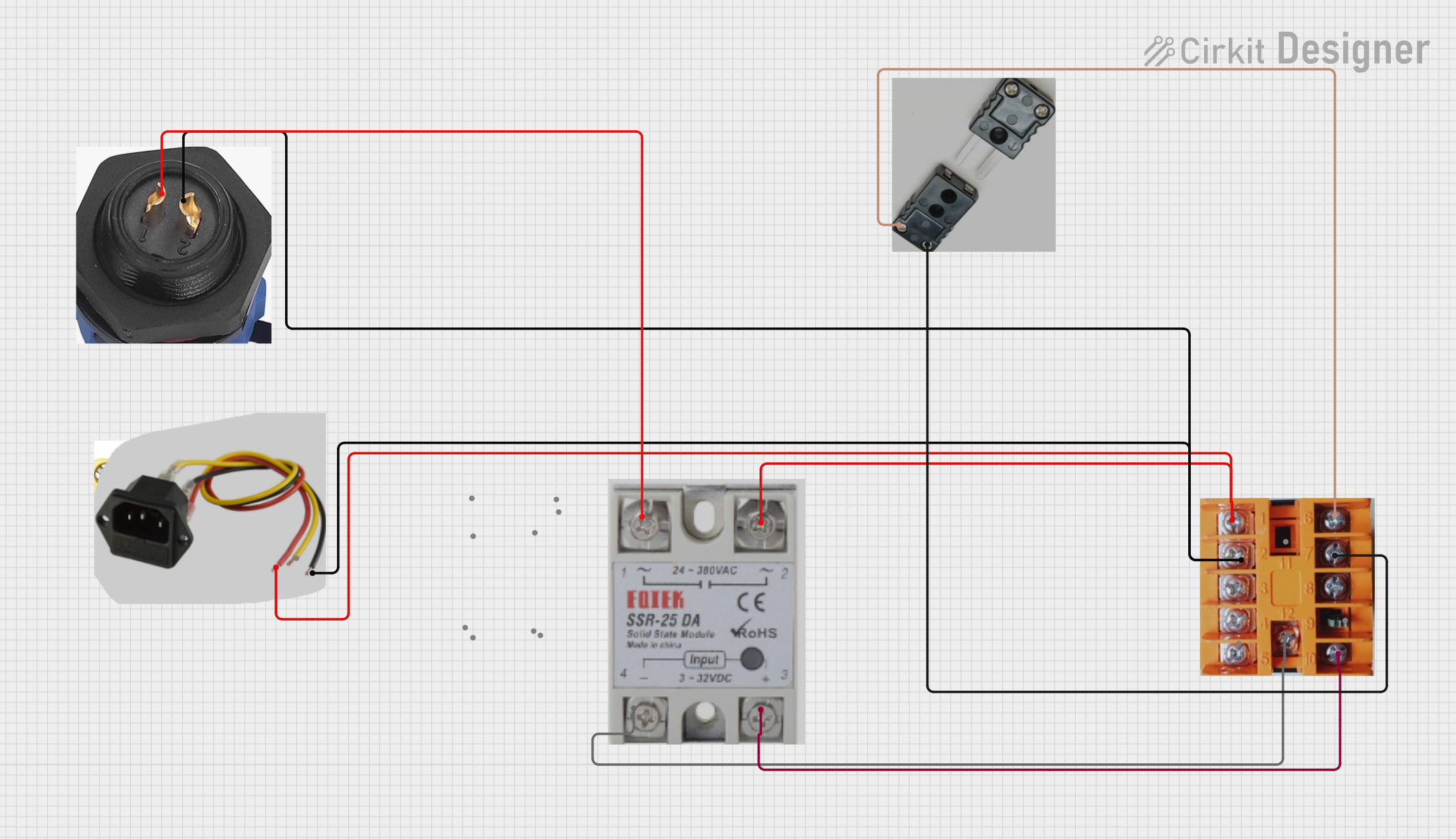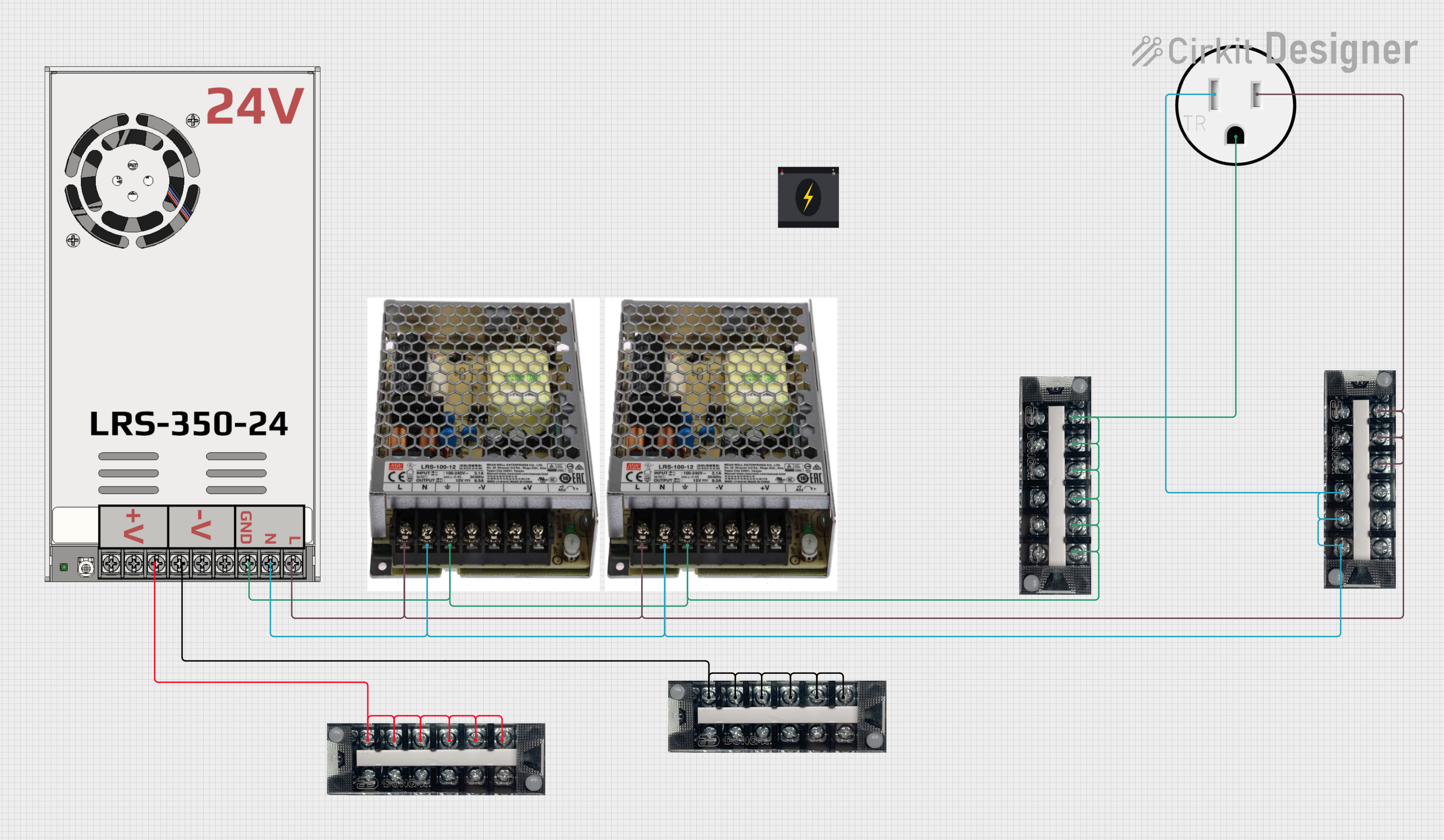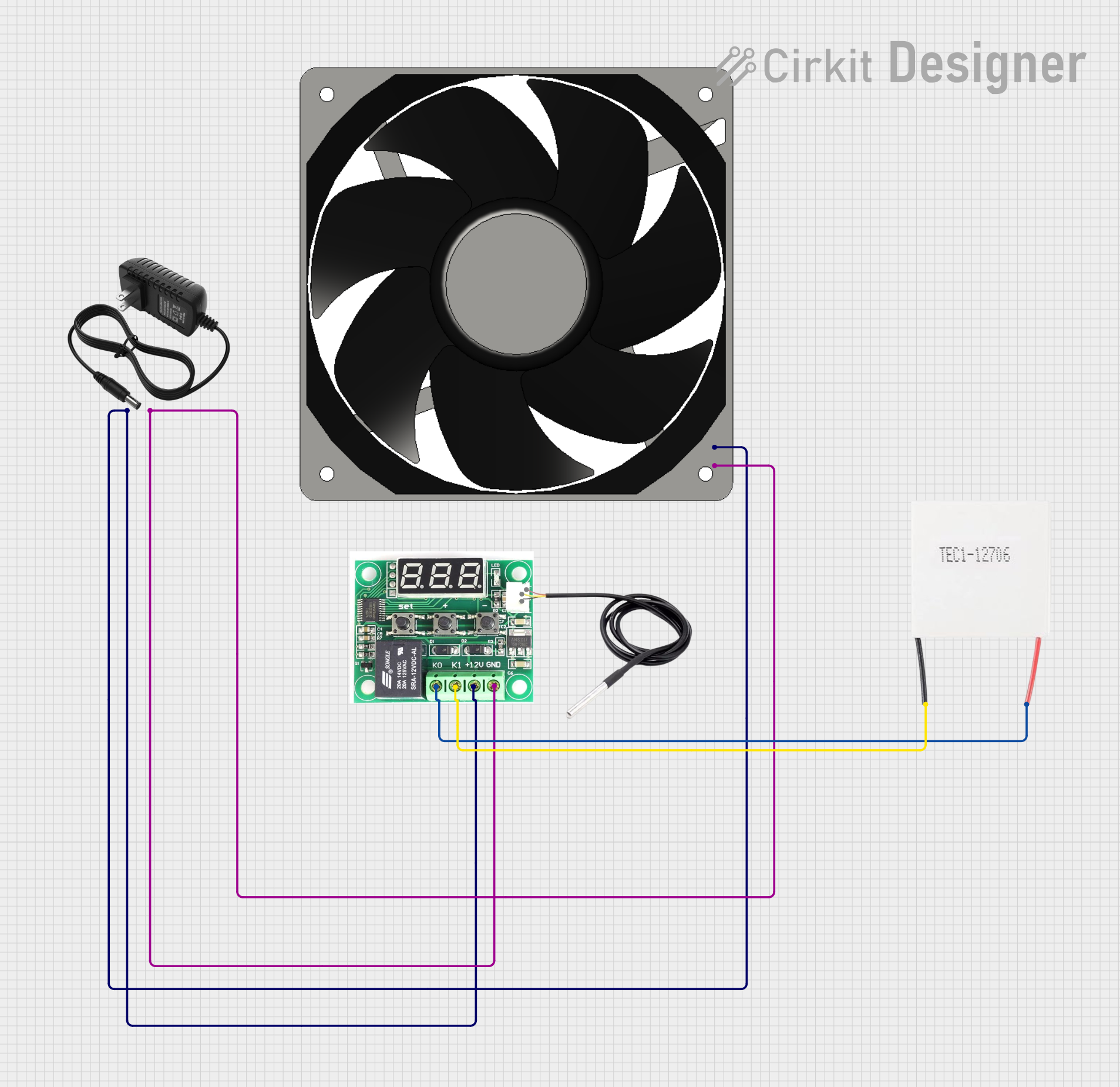
Cirkit Designer
Your all-in-one circuit design IDE
Home /
Component Documentation
How to Use PTC 100W: Examples, Pinouts, and Specs

 Design with PTC 100W in Cirkit Designer
Design with PTC 100W in Cirkit DesignerIntroduction
The PTC 100W is a Positive Temperature Coefficient (PTC) thermistor with a power rating of 100 watts. This component is primarily used for overcurrent protection and temperature sensing applications. When the temperature increases, the resistance of the PTC thermistor also increases, which helps in limiting the current flow and protecting the circuit from damage.
Explore Projects Built with PTC 100W
PT100 Temperature Sensor with Rocker Switch and Resettable Fuse

This circuit is a basic power control system that uses a rocker switch to control the flow of 220V power through a resettable fuse and a PT100 temperature sensor. The switch allows the user to turn the power on or off, while the fuse provides overcurrent protection and the PT100 sensor can be used for temperature monitoring.
 Open Project in Cirkit Designer
Open Project in Cirkit DesignerPID Temperature Control System with Thermocouple and SSR

This circuit is a temperature control system that uses a thermocouple to measure temperature and a PID controller to regulate it. The PID controller drives a solid-state relay (SSR) to control an external load, with power supplied through an AC inlet socket.
 Open Project in Cirkit Designer
Open Project in Cirkit DesignerModular Power Distribution System with Multiple SMPS Units and 120V Outlet

This circuit is designed to convert 240V AC power to both 12V and 24V DC outputs using multiple SMPS units. Terminal blocks are used to organize and distribute the power, while a 120V outlet provides additional AC power access. The circuit is likely used for powering various electronic devices that require different voltage levels.
 Open Project in Cirkit Designer
Open Project in Cirkit DesignerW1209 Thermostat-Controlled Peltier Cooler with 12V Fan

This circuit is a temperature control system that uses a W1209 thermostat module to regulate a Peltier module and a 12V fan. The 12V power supply provides power to the W1209 module and the fan, while the W1209 controls the Peltier module based on temperature readings.
 Open Project in Cirkit Designer
Open Project in Cirkit DesignerExplore Projects Built with PTC 100W

PT100 Temperature Sensor with Rocker Switch and Resettable Fuse
This circuit is a basic power control system that uses a rocker switch to control the flow of 220V power through a resettable fuse and a PT100 temperature sensor. The switch allows the user to turn the power on or off, while the fuse provides overcurrent protection and the PT100 sensor can be used for temperature monitoring.
 Open Project in Cirkit Designer
Open Project in Cirkit Designer
PID Temperature Control System with Thermocouple and SSR
This circuit is a temperature control system that uses a thermocouple to measure temperature and a PID controller to regulate it. The PID controller drives a solid-state relay (SSR) to control an external load, with power supplied through an AC inlet socket.
 Open Project in Cirkit Designer
Open Project in Cirkit Designer
Modular Power Distribution System with Multiple SMPS Units and 120V Outlet
This circuit is designed to convert 240V AC power to both 12V and 24V DC outputs using multiple SMPS units. Terminal blocks are used to organize and distribute the power, while a 120V outlet provides additional AC power access. The circuit is likely used for powering various electronic devices that require different voltage levels.
 Open Project in Cirkit Designer
Open Project in Cirkit Designer
W1209 Thermostat-Controlled Peltier Cooler with 12V Fan
This circuit is a temperature control system that uses a W1209 thermostat module to regulate a Peltier module and a 12V fan. The 12V power supply provides power to the W1209 module and the fan, while the W1209 controls the Peltier module based on temperature readings.
 Open Project in Cirkit Designer
Open Project in Cirkit DesignerCommon Applications and Use Cases
- Overcurrent Protection: Automatically limits the current in a circuit when the temperature rises beyond a certain threshold.
- Temperature Sensing: Used in various applications to monitor and control temperature.
- Heaters: Employed in heating elements where a self-regulating temperature is required.
- Power Supplies: Protects power supplies from overcurrent conditions.
Technical Specifications
Key Technical Details
| Parameter | Value |
|---|---|
| Power Rating | 100W |
| Resistance at 25°C | 10Ω |
| Maximum Voltage | 250V |
| Trip Current | 2A |
| Hold Current | 1A |
| Operating Temp. | -40°C to 125°C |
| Thermal Time | 10s |
Pin Configuration and Descriptions
| Pin Number | Pin Name | Description |
|---|---|---|
| 1 | A | Connected to the positive voltage supply |
| 2 | B | Connected to the load or ground |
Usage Instructions
How to Use the Component in a Circuit
- Identify the Pins: Ensure you correctly identify the pins (A and B) of the PTC 100W thermistor.
- Connect to Power Supply: Connect pin A to the positive voltage supply.
- Connect to Load: Connect pin B to the load or ground, depending on your circuit design.
- Verify Connections: Double-check all connections to ensure they are secure and correct.
Important Considerations and Best Practices
- Heat Dissipation: Ensure adequate heat dissipation to prevent overheating.
- Voltage Rating: Do not exceed the maximum voltage rating of 250V.
- Current Rating: Ensure the current does not exceed the trip current of 2A.
- Environmental Conditions: Operate within the specified temperature range (-40°C to 125°C).
Example Circuit with Arduino UNO
Below is an example of how to use the PTC 100W thermistor with an Arduino UNO for temperature sensing:
const int thermistorPin = A0; // Analog pin connected to the thermistor
const float baselineTemp = 25.0; // Baseline temperature for reference
void setup() {
Serial.begin(9600); // Initialize serial communication
pinMode(thermistorPin, INPUT); // Set thermistor pin as input
}
void loop() {
int sensorValue = analogRead(thermistorPin); // Read the analog value
float voltage = sensorValue * (5.0 / 1023.0); // Convert to voltage
float resistance = (5.0 - voltage) * 10000 / voltage; // Calculate resistance
float temperature = baselineTemp + (resistance - 10000) / 100; // Estimate temperature
Serial.print("Temperature: ");
Serial.print(temperature);
Serial.println(" °C");
delay(1000); // Wait for 1 second before next reading
}
Troubleshooting and FAQs
Common Issues Users Might Face
Incorrect Readings:
- Solution: Ensure all connections are secure and correct. Verify the power supply voltage.
Overheating:
- Solution: Check for adequate heat dissipation. Ensure the current does not exceed the trip current.
No Response:
- Solution: Verify the component is within the operating temperature range. Check for any physical damage.
Solutions and Tips for Troubleshooting
- Double-Check Connections: Ensure all connections are correct and secure.
- Use Proper Heat Sinks: If the component is overheating, use appropriate heat sinks or cooling mechanisms.
- Verify Power Supply: Ensure the power supply voltage and current are within the specified limits.
- Check for Damage: Inspect the component for any physical damage or signs of wear.
By following this documentation, users can effectively utilize the PTC 100W thermistor in their electronic projects, ensuring reliable performance and protection.